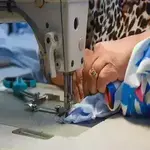Pattern Making and Grading
Our skilled pattern makers create precise, two-dimensional representations of garments using eco-friendly fabric options such as organic cotton, recycled polyester, and Tencel™. We specialize in low MOQ clothing manufacturing, with a minimum order of just 300 pieces per style, making us the perfect partner for startups and smaller businesses.









